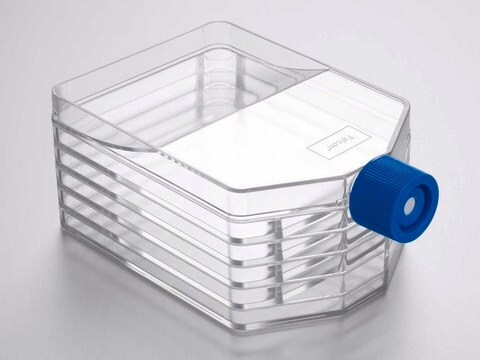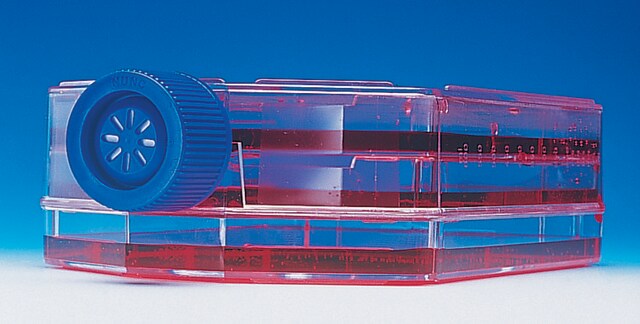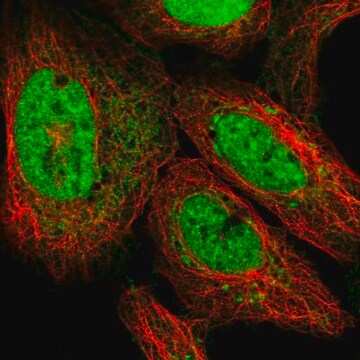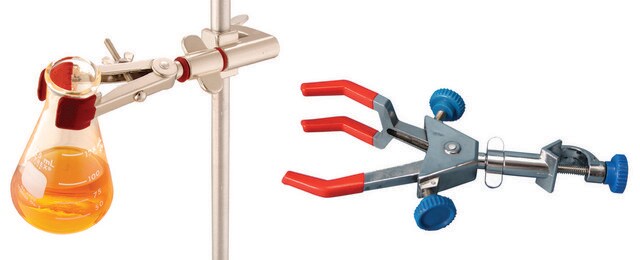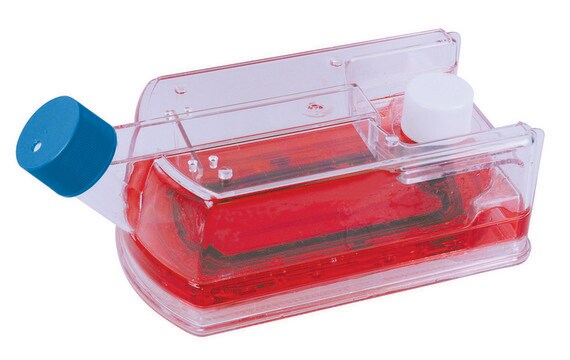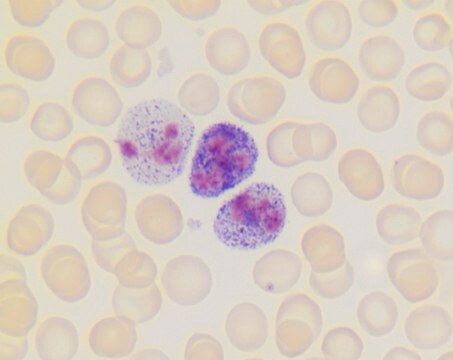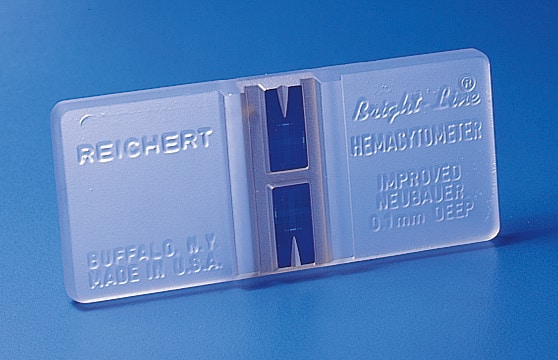おすすめの製品
物質
high-density polyethylene cap
polystyrene flask
品質水準
無菌性
sterile; γ-irradiated
特徴
5 layer
包装
pack of 8
メーカー/製品名
Millicell®
パラメーター
45 °C max. temp.
テクニック
cell culture | mammalian: suitable
H
51 mm , excluding cap
74 mm , including cap
L
22.2 cm
W
12 cm
表面積
1000 cm2
有効容積
200-300 mL
結合型
Tissue Culture (TC)-treated surface
輸送温度
ambient
調製ノート
- 細胞を播種するには、Millicell HY T-1000フラスコを目的の増殖培地で満たします。
- 細胞を目的数追加して、一般的な播種密度を達成します。
- フラスコの末端を持ち上げて、溶液を上下に数回ピペッティングして均一な懸濁液が得られるまで混合することにより、細胞と培地を混合します。注:細胞を均一な懸濁液になるまで十分に細胞を混合しないと、Millicell HY フラスコの層間で細胞の分布が不均一になる可能性があります。
- 短い時間フラスコを横向きに寝かせて、フラスコの複数の層の間で液量が均一になるようにします。
- フラスコを底が下になるように傾けて、フラスコの各層で液量を分配します。
- フラスコを寝かせて、細胞懸濁液を各層の全表面に均一に広げます。
- 容量に応じて、全4隅を下にしてフラスコをゆすって表面全体が濡れるようにする必要があるかもしれません。注:いずれかの層の液量が濡らす手順の間に変化した場合(上層から下層への液体の漏れなど)、ステップ4–6を繰り返して、全層で液体が均一に分配されるようにしてください。
- インキュベーターに移動する際には、フラスコを水平位置に戻します。フラスコをインキュベーター内に水平に置き(ステップ6のように)、適切な条件下で細胞を培養します。
- 培地交換が必要な場合、Millicell HY T-1000フラスコから培地を吸引するか注ぎ出します。注:Millicellフラスコは表面積が大きいため、毎回吸引後にはフラスコを横向きに数分間経たせておいて、すべての残留液を一カ所に集めて、2回目の吸引で残りの液体を完全に除去することができるようにすることが必要になるかもしれません。
- 適切な量の未使用培地を追加し、ステップ4–8を繰り返します。
- 細胞を回収するには、ステップ9の方法で培地を除去します。
- 目的量の適切な洗浄液(例:PBSまたは0.02% EDTA)をフラスコに追加し、ステップ4–7を繰り返します。
- ステップ9のように洗浄液を除去します。.
- 目的量の分離陽酵素(例0.25% trypsin/EDTAなど)を、好みのプロトコルに従って加え、ステップ4–8を繰り返し、インキュベートします。cm2 当たり必要な分離用酵素の量は、Tフラスコプロトコルから変更する必要はありません。注:すべての細胞がフラスコ表面から完全に分離していることを顕微鏡で確認してください。培養表面から細胞が完全に分離できるよう(全細胞が自由に浮遊している状態になるよう)にしないと、細胞収量が低下する可能性があります。
- trypsinを使用する場合、目的量の不活化溶液(例:血清含有培地)を追加します。
- ステップ9の方法のように、吸引または注ぎ出してすべての細胞を回収します。
法的情報
Millicell is a registered trademark of Merck KGaA, Darmstadt, Germany
保管分類コード
10-13 - German Storage Class 10 to 13
試験成績書(COA)
製品のロット番号・バッチ番号を入力して、試験成績書(COA) を検索できます。ロット番号・バッチ番号は、製品ラベルに「Lot」または「Batch」に続いて記載されています。
ライフサイエンス、有機合成、材料科学、クロマトグラフィー、分析など、あらゆる分野の研究に経験のあるメンバーがおります。.
製品に関するお問い合わせはこちら(テクニカルサービス)
